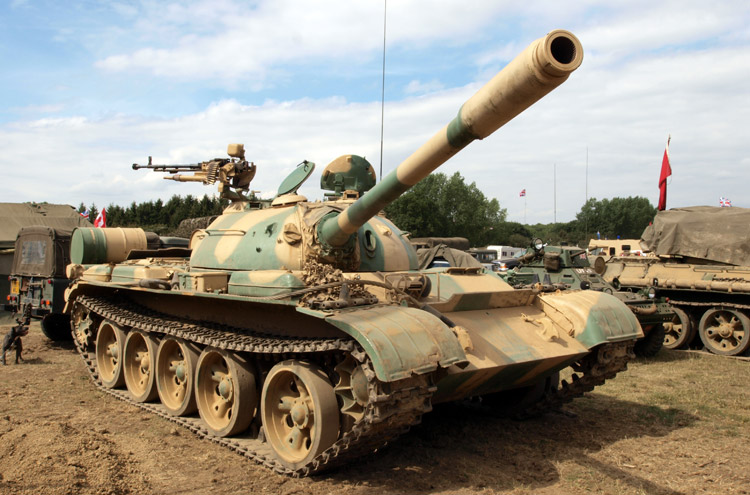INDIAN ARMED FORCES CHIEFS ON OUR RELENTLESS AND FOCUSED PUBLISHING EFFORTS

The insightful articles, inspiring narrations and analytical perspectives presented by the Editorial Team, establish an alluring connect with the reader. My compliments and best wishes to SP Guide Publications.

"Over the past 60 years, the growth of SP Guide Publications has mirrored the rising stature of Indian Navy. Its well-researched and informative magazines on Defence and Aerospace sector have served to shape an educated opinion of our military personnel, policy makers and the public alike. I wish SP's Publication team continued success, fair winds and following seas in all future endeavour!"

Since, its inception in 1964, SP Guide Publications has consistently demonstrated commitment to high-quality journalism in the aerospace and defence sectors, earning a well-deserved reputation as Asia's largest media house in this domain. I wish SP Guide Publications continued success in its pursuit of excellence.
- Operation Sindoor: Resolute yet Restrained
- Advanced MRSAM for India for a greater firepower
- Japan and India set forth a defence cooperation consultancy framework, talks on tank and jet engines
- Uri, Pulwama and now Pahalgam
- Terrorist Attack in Pahalgam in Kashmir: Unfolding a long surgical war against PAK
Robot Tank, Robot Warship
 |
The Author is Former Director General of Information Systems and A Special Forces Veteran, Indian Army |

In March 2018, a video from CCTV-7 Chinese military channel, posted by the Chinese streaming platform Sohu, showed a PLA soldier driving the Type 59 from an independent computer terminal with a steering wheel to control and drive remotely the main battle tank; indicating PLA had developed their first unmanned main battle tank, using the Type 59 Main Battle Tank (MBT) platform. Main armament of the Type 59 includes 1 x 100mm cannon, 1 x 7.62mm coaxial machine gun and 1 x 12.7mm anti-aircraft machine gun mounted on the roof of the turret. PLA has also launched the development of unmanned vessel, fighter and combat helicopter. In October 2016, PLA had organized the unmanned ground system final challenge in which 73 teams from 44 universities, institutions and private companies participated. On August 2019, the Russian Ministry of Defence announced that Russian company Uralvagonzavod (UVZ) is developing two unmanned variants of the T-72B3 MBT; one variant is a crewless combat vehicle with heavy weapons and the second is a crewless combat vehicle with automatic guns.
The development is taking place in Workshop 130 which all Russian MBTs. The Russian Ministry of Defense plans an evaluation of an innovative 'robotic tank formation' concept termed 'Storm' that will enhance the operational capabilities of mechanised formations in urban areas. The 'Storm' concept will employ a robotized T-72B3 tank in at least five configurations, to create a semi-autonomous 'robotic vanguard', coordinated and controlled by human operators from few kilometers away. The Russian Ministry of Defense plans an evaluation of an innovative 'robotic tank formation' concept that will enhance the operational capabilities of mechanised formations in urban areas. The 'Storm' concept will employ a robotised T-72B3 tank in at least five configurations, to create a semi-autonomous 'robotic vanguard', coordinated and controlled by human operators from few kilometers away.
A proof concept demonstrator has already been completed, to test mobility functions of the robotic tank. The new concept differs from other robotic tanks like the Uran-9 that gained its first combat experience in Syria, and the 'Wingman' tank concept evaluated by the US Army, as these platforms were often teleoperated from a control vehicle positioned close to the weaponised robot. The 'Storm' project comprises multiple versions of unmanned T-72B3 tanks employing robotic functions for autonomous mobility, communications, self-protection, and situational awareness, with high-level mission supervision maintained from a distance by remote operators. Each of the robotic vehicles will be equipped with active protection, dozer blade and remotely controlled 7.62 PKTN machine gun, that will likely provide the vehicle autonomous mission capabilities to include obstacle avoidance using movement planning and tools (like dozer blade), and automatic self-protection relying on active defence sensors and defeat mechanisms, threat detection, localization and defeat threats using active protection and remotely controlled machine guns.
They would also be equipped to interpret blue-force tracking (BFT) situational pictures to report their status and positions and avoid fratricide. Other functions are likely to be controlled by manned operators.
Russia's 'robotic squad' will comprise four robotic variants:
- A 50-tonne MBT that mounts a 125mm cannon with truncated barrel;
- A T-72 chassis loaded with a stack of RPO-2 multi-effect rockets - Shmel-M;
- A robotic variant of the Terminator fire support vehicle using turret mounting two 2A42 30mm cannons, each loaded with 500 rounds, and;
- A robotic version of the TOS-1A, a T-72 chassis mounting a launcher stacking 16 NURS 220mm thermobaric rockets.
The Robotic Squad will be controlled by manned mission command vehicle (T-72 heavy APC) positioned up to three km from the leading robotic tank. The datalink connecting the robot vehicles and command unit will be critical because of high level of interference experienced in urban areas.
On August 22, 2019, China has launched an unmanned warship, which, its developer claims, is combat-ready. The warship, jointly developed by No. 716 and No. 702 research institutes under China's state-owned China Shipbuilding Industry Corporation (CSIC), has a length of about only 15 m and a displacement of 20 tonnes. The JARI multi-purpose unmanned combat vessel held its launch ceremony on August 21. Such an ingenious design may have a limited range but can be conceptualised for use in island territories like our Andaman & Nicobar Group of Islands (ANC). Additionally these small but versatile unmanned vessels will assist and augment the defence of naval bases and ports autonomously, relieving the task of larger manned surface combatants while they prepare for more onerous open ocean duties. With broad application in the military field, unmanned robots will profoundly change future military operations; remaining at the strategic forefront of equipment development in developed armies. For India, the such developments in Chinese armed forces are very significant especially considering the China-Pakistan defence cooperation.
Unmanned ground systems are already being used in multiple military tasks including logistics transportation, anti-terrorist operations, post-disaster relief efforts, and strategic investigations under complicated geographic conditions. Since a few years, China has developed a full range of UGVs (Unmanned Ground Vehicles) and UAVs (Unmanned Aerial Vehicles) to equip Chinese armed forces. Russia's 'Storm' concept and 'Robotic Squad' and China's compact unmanned warship should evince keen interest in our military. Above all, our R&D should not only be abreast of these developments, but researching the next levels. The combination of robots riding on artificial intelligence has the potential of changing concepts and warfare to great extent. India cannot afford to found wanting.





